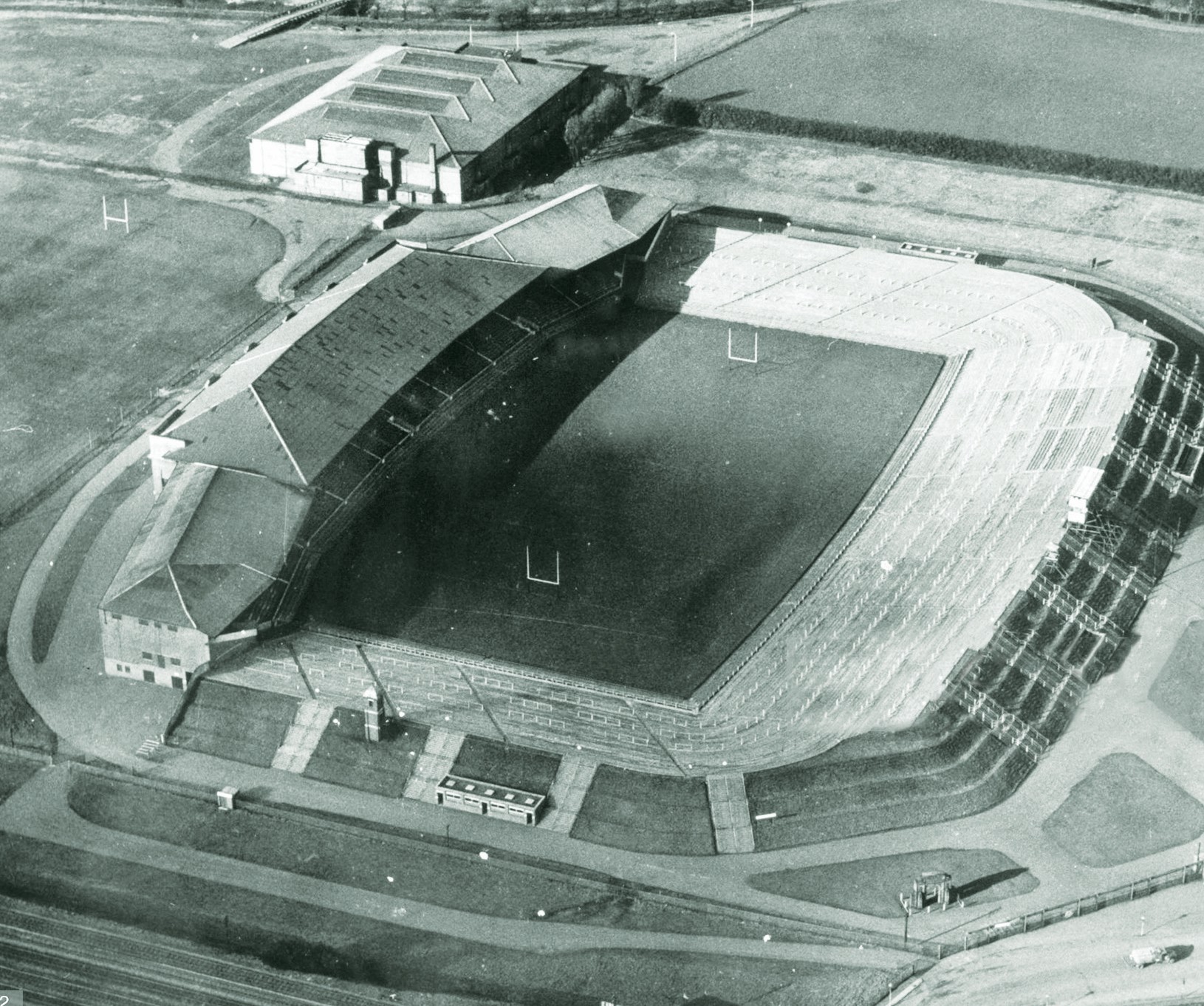Bird’s-eye view of the pride of Scottish rugby

Brendan Gallagher delves into some of rugby‘s most enduring images, their story and why they are still so impactful
What’s happening here?
It’s a glorious spring day in 1961 and an unnamed photographer has taken to the skies in Edinburgh in a light aircraft –no drones back then – to take a picture of a resplendent Murrayfield.
Scotland‘s home ground is completely, eerily, deserted with not even a groundsman or parked car to be seen.
Meanwhile in the top left of the picture as you look at it is Murrayfield ice rink which still exist today, home of the Murrayfield Racers Ice Hockey team who have perennially been one of Britain’s strongest sides. At the bottom of the picture is the railway line into Edinburgh which exists there still.
What is the story behind the picture?
This is not a random picture. The previous year, after decades of Scotland playing on nigh on impossible muddy and wet surfaces, the SRU took the extremely enlightened and progessive decision to install state of the art undersoil heating. It was a huge project financially and Scotland were the first Rugby Union team in the world to undertake such work.
It involved a considerable feat of engineering and for a while Murrayfield resembled a construction site but here we are less than a year later and not a ditch line or parch mark to be seen. Murray- field has been restored to its full magnificence and the SRU were keen to get that story out.
The work involved 39 miles and 207 galvanised heating cables which were carefully laid in precise shal- low six inch deep ditches placed exactly 6 3/4 inches apart. These traversed the length of the pitch and four feet beyond the two large in-goal areas while at the last minute they ordered up a further 12 cables to install along the other out of play side of the touchlines to ensure that area was also kept frost free.
A specially designed ‘mole plough’ was built and used behind a specially adapted tractor to precisely excavate the ditches and that design was used to install undersoil heating around the globe for decades to come.
It was a mighty piece of work of which the SRU were inordinately proud. They even commissioned a documentary to be made filming the entire process which is on YouTube.
What happened next?
No matter how fierce the winter, and Scotland endured plenty of those, their international games were always safe as were inter-district and trial games when they otherwise might have been postponed along with squad training sessions. In the modern era Glasgow and Edinburgh have switched big games to the stadium when their own pitches have been rendered unplayable by extreme weather.
Iconic Rugby Pictures: PART 81
Murrayfield from the air Spring 1961
Why is this picture iconic?
There is something almost primeval about this image. Murrayfield is, of course, an entirely man-built structure, a mass of concrete and unseen steel, but from this privileged position it appears like a natural god-given amphitheatre with its vast hillock-like shallow terraces blending into what you might be forgiven for thinking was a natural landscape. The terraces don’t end abruptly at their high point but sweep gently downwards providing a comfortable access for the tens of thousands of spectators. There is a fortress-like look to Murrayfield with its rampart terraces.
On the left is the old grandstand and the other two curiously angled covered areas. The geometry and configuration of Murrayfield, which started life as an oval marked out on old polo grounds, has always been a tad confusing and disorientating. Even the modern day stadium continues that eccentric tradition with the slightly drunken stagger of the large stands which have replaced that huge East Terrace.
Finally, as an ice hockey fan, I love the nod to the ice hockey stadium, which is still there having weathered various storms and closures over the decades.
Generations of us have gathered in front of it at the appointed hour to meet friends before a Scotland game or sheltered impatiently from the weather in its lee for the SRU media accreditation man to turn up and dish out the tickets.
The Murrayfield arena was for many years the fiefdom of Scotland’s Tony Hand, the greatest ever GB ice hockey player and the only native born Brit, in modern times, to be drafted into the NHL when Edmonton Oilers swooped in 1986.
“SRU had taken the progessive decision to install state of the art undersoil heating”
That didn’t work out but there was the small matter of 964 goals and 1,918 assists in the various British National Leagues in over 20 years at the top. The Scottish Gretzky he was called and the only footwork I’ve ever seen to match him at Murrayfield was Phil Bennett and his try next door against Wales in 1977.
Footnote: Murrayfield of old was always famed for its huge walk-up crowds which made official attendances difficult to compute but they certainly nudged up towards 90,000 and famously topped out at 104, 000 for the game against Wales in 1975.
Health and safety would never allow it these days but you can see why it was a relatively safe process. The current capacity is 67, 144